EBR charges a service fee to manufacturers to produce ebike reviews and videos, this began in 2018. It’s the same flat fee for each bike, and it helps us to keep the site going while limiting ad clutter. We appreciate the opportunity to serve you with our opinions and data but respect your right to know that we receive compensation :)
The Trek Powerfly electric mountain bike models have been completely redesigned and updated for 2019, and EBR was invited to attend a launch event at Mammoth Mountain resort in California to check them out for this review. I brought my friend Brandy, who is a beginner mountain biker, and we spent the day hearing about updates and then going for rides (up and down the lower sections of the mountain). Mammoth sits at roughly 11,000 feet (3,352 meters) elevation above sea level, and there was a small forest fire burning nearby during our visit… so it was awesome to have electric assist, to make it easier to breathe. Summertime is beautiful in the Inyo National Forest, Mammoth is a lava dome volcano and the terrain is really unique and varied (featuring soft volcanic pumice in some areas and steep jagged rock in others). We got to interview one of the Mammoth staff and learn about the resort’s rich history of innovation… and there was a little celebration happening because the mountain has become one of the first in the US to officially allow Class 1 electric bicycles on national forest land. Anyway, it was pretty warm in the afternoons and I’m certain that we couldn’t have ridden as far or stayed as cool and comfortable on traditional mountain bikes. It certainly wouldn’t have been as much fun for the two of us to ride at a similar pace together. I’d consider myself an intermediate mountain biker, but I have an injured left knee and have become a big fan of e-bikes as a way to keep up with advanced riders and just go further.
All of the Powerfly electric bike models from from Trek share the same Bosch PowerTube 500 battery and Performance Line CX motor. They range from affordable hardtail models called the Powerfly 5 and Powerfly 5 Women’s (which has a slightly lower, sloped top tube), up to the Powerfly 5 FS (full suspension), the Powerfly 7 FS, the Powerfly 7 LT (long travel) which was the focus of this review, and the Powerfly 9.7 LT (a carbon fiber long travel version). If I were purchasing one of these models for myself, I’d probably go with the 7 FS because I don’t need the longer travel suspension for aggressive downhill riding and prefer the all-black color scheme on that model, which hides the black motor casing. If money were no object, the Powerfly 9.7 LT would be nice because Trek was able to tilt the motor a bit for a nicer looking integration and carbon fiber tends to reduce jitter and weigh a bit less. The 7 LT came in around 52.3 lbs (23.7 kg) which is about average for bigger suspension, thru axles, plus sized tires, and the PowerTube 500 battery (which weighs more than the older external PowerPack plastic batteries). In recent years, I discovered that Trek created the wider Boost axle and bottom bracket standard. This allows for a stronger spoke bracing angle which supports plus sized tires (2.6″ to 3.0″ width). You can see that on these bikes, and I was told that the Q Factor is 190 mm and that the frame was made a bit long to help keep the front wheel down on steep descents. Despite this, I managed to lift the front wheel on a couple of occasions during our ride test. Trek has another innovation in store for people who are willing to spend some time unscrewing bolts… the seat stays can be made slightly longer or shorter by flipping this washer called a Mino Link which changes the fork angle by about one percent. I haven’t seen this on any other electric mountain bikes. Same goes for the Lock Block headset, designed to stop the crown from bashing into the downtube in the event of a crash. Other frames utilize curved downtubes that aren’t as stiff. The rear suspension design uses a rocker link and vertical shock position to keep as much weight directly below the rider (at the center of the frame) as possible. Older Trek models had a floating pivot design but I was told that they have moved towards direct frame mount in an effort to stiffen the chain stays and bottom bracket. The rear wheel mounts to a pivot point and benefits from an Active Braking Pivot (ABP) design meant to isolate suspension movement from braking, to keep your rear wheel in contact with the ground and reduce stiffening and brake squat. Lots of fancy proprietary engineering happening here. As a more casual rider, I was drawn to the clean internally routed cables, tight motor casing with clever molded chain guide and alloy skid plate (with bottle opener), double-sided slap guard and chain suck protector wedge, and powerful 203 mm hydraulic disc brakes with quad piston calipers. As someone who frequently rides with just one hand on the bar (because I’m filming), it’s nice to have good brakes. For whatever reason, the brakes were squeaking a bit during my rides, and that could be due to some hand oils on the rotors from transport, assembly, and demos. It was great to work with the Trek team to be fit to the frame properly and then have the suspension sagged to my body weight. Both air shocks have black anodized coatings to minimize stiction, offer rebound, and compression adjust… they felt great. With five frame sizes available for each of the Powerfly models coming to the US, and a vast network of dealers, you’ll be able to find a great fit and get set up properly like we were.
Driving the bike is a planetary geared mid-motor that’s rated 250 watts nominal and 600 watts peak. Depending on the market you’re in, the top speed may be 32 km/h (20 mph) or 25 km/h (15.5 mph) to comply with local regulations. It’s a Class 1 product, meaning that it utilizes pedal assist only and is allowed on the widest number of trails (including at Mammoth). With a peak torque rating of 75 Newton meters, it’s one of the most powerful centerdrive electric bike drive systems on the market, but it’s also one of the loudest. If you’re riding on gravel trails or through the woods, the high pitched motor sound is mostly masked by tire contact. What’s so impressive about this system is that it responds to rear wheel speed, pedal cadence, and pedal torque over 1,000 times per second and incorporates software driven shift detection. Bosch is well known for their motor controller system and the Performance Line CX motor offers an eMTB mode that was developed in tandem with professional mountain bike riders. The motor itself weighs a bit more than some of the competition at roughly 8.8 lbs. There’s definitely room for improvement here, but Bosch has earned a reputation for quality and reliability. They were one of the first big companies to enter the US with brands like Haibike and have faithfully served the North American market longer than Brose, Shimano, Yamaha, and most others. What you trade in millimeters and grams is made back through reliability and leading performance. Perhaps my favorite part about this motor, and a feature that is especially relevant to electric mountain biking applications, is the higher pedal RPM support. Basically, you can pedal fast in a high gear and the motor will continue supporting you at up to 120 pedal strokes per minute. I tried to demonstrate this in the video review above… Some other motor systems cut out at 100, 110, or begin to fade near 120. This motor can handle steep climbs but also supports faster spinning on cross country sections. It empowers you as a rider vs. forcing you to adapt to electric assist. I also appreciate the walk mode feature that was working on the latest batch of Powerfly ebikes. This is a feature that most earlier (pre-2018) Trek models had disabled, but it comes in very handy for those moments when the terrain is too difficult to ascend or you’ve got a flat. The 11-speed Shimano Deore XT drivetrain empowers the Bosch mid-drive to climb and can easily pedal the bike beyond the top assisted speed. You’ve got an 11-46 tooth cassette and a proprietary 15-tooth (38 tooth equivalent) chainring to work with. The motor utilizes a reduction gearing system to spin the 15 tooth cog 2.5 times per single crank revolution and this causes a bit of mechanical drag that eats into efficiency when the bike is unpowered or pedaled beyond the top assisted speed. Some benefits might be faster starts and stops along with excellent chain retention… but the chain is also positioned very near the chain stay, so there’s more contact happening as you ride over bumps. Thankfully, the Deore XT derailleur does come with a one-way clutch system, a little grey lever that can be clicked into the up position to tighten the derailleur spring and reduce bounce. Position it in the forward position for easier wheel maintenance.
One of the most exciting new design features that Trek has introduced for their 2019 mountain models is the Bosch PowerTube 500 battery integration. In the past, Trek has done a great job of matching and smoothing the external plastic PowerPack battery… insetting the packs and even using plastic covers for protection and aesthetic enhancement, but it still stuck up above the downtube and stood out. It limited space for adding bottle cage bosses and other accessories in the main triangle of the frame. The PowerTube, by contrast, is completely hidden inside the downtube and it stays out of the way completely. The battery bay is wide open when the pack is removed and this actually makes it easier for shops to adjust shifter, brake, electrical, and seat post dropper cables. The battery pack is encased in an aluminum alloy shell and has a second layer of alloy protective covering screwed onto the right side, painted to match the downtube design of each specific model. We were told that the shield does not add to the structural integrity of the frame (and for the carbon fiber 9.7 model it is still aluminum alloy) so it definitely adds some weight. In addition to the shield, there’s also a plastic top cap with flip-up handle. This is a welcome feature because it makes removing and transporting the $900+ battery much easier and safer. You first have to unlock the pack from the left side of the frame and then it pops out about halfway before you can press a lever on top (where the handle is) and pull it the rest of the way out. This two-step approach is also very nice for safety, but it only works on the way out… When you’re mounting the pack, you actually have to insert the key and twist it on the left side of the frame while trying to balance and push the battery pack from the right. I wish the halfway step did not require a key so that the process of balancing everything could be less precarious. I asked about this and was told that Trek wanted to make the locking mechanism secure and reduce rattling, so this is why the key must be turned. Anyway, I do appreciate the thought that went into putting the battery door on the left side of the frame vs. the bottom (where the pack could drop out easier on removal due to gravity), the top (where the pack could collide with the top tube from below), or the right (which would encourage riders to lay their bikes down on the more delicate drivetrain side). But still, the key port is on the left, so if you do lay the bike down it could be a challenge to reach under and twist. The charging port is also on the left side of the frame, directly in the path of the left crank arm. The Bosch plug interface is a wider proprietary design that seems sturdy, but it’s still worth being careful not to snag. There’s a little plastic door protecting the charging port and this is a nice upgrade from the stand-alone rubber plugs I see on some other models that could get lost when they don’t have leashes. I do recommend being delicate and thoughtful when laying the bike down on the left side because the larger 203 mm disc brake rotors could get bent easily (especially in off-road environments with sticks and rocks strewn about). Amazingly, the left chain stay has a 20 mm threaded tab for adding a kickstand! So, if you’re buying an all mountain electric bike and want to ride it around with a jittering stand, you can do that! Or, you could ride it around an urban environment and take on curbs, grassy hills, and pretty much anything else, and still stand it up straight in your garage and at the bike rack. Nice one, Trek :D Just like the older Powerpack batteries, the new PowerTube can be charged on or off the frame, and Bosch continues to lead with their compact, lightweight, faster 4-amp charger. I’d definitely remove the ~7.4 lb battery before lifting the bike for service or mounting it to my car rack. The battery has a little LED indicator on the base (where you plug it in) that communicates a rough estimate of fill level. To maximize lifespan, keep the battery charged over 20% as frequently as possible and avoid extreme heat and cold. The PowerTube is longer than the older PowerPack, it’s less universal because of the proprietary covering that each company is making for themselves, and it’s less available to travelers (or between bikes in the same family due to the covers). Sure, you could borrow a different colored battery for a long trip if you and a friend both have Trek ebikes, but imagine trying to stick this thing into a backpack or pannier bag. It’s just not as compact or convenient as the PowerPack… So I kind of miss that from the older Powerfly models, which still looked great. The 36 volt 13.4 amp hour size is about average for this generation of ebikes, and the lithium-ion cells are above average in terms of quality and warranty support. I really like and trust Bosch, but compared to the custom 36 volt 17.5 amp hour packs for some Brose powered ebikes that actually weigh less, it leaves something to be desired.
Activating the electric systems on this bike is fairly straightforward. You charge and mount the battery then press the power button on the top edge of the little display panel, which is mounted within reach of the left grip. This is the Bosch Purion display panel, one of the nicer compact offerings on the market right now. It cannot be swiveled to reduce glare easily, is not removable for protection, does not show as many menus (missing Clock, Max Speed, Average Speed, Trip Time, Shift Recommendation), and does not have an active Micro-USB charging port like the larger Bosch Intuvia display. However, it keeps the handlebars clean and may not get damaged as easily in the event of a tip. This is a very popular display panel for electric mountain bikes, which often strive to go “below the radar” and limit fancy accessories that could get broken or attract unwanted attention. I have grown to accept it but have a few tips for use… the + and – button pads that raise or lower power for assistance click in at an angle towards the right. They are attached near the left edge of the control pad and pivot in towards the LCD. The right edge is their sweet spot, sometimes even the middle can be difficult to click in or just inconsistent. The screen itself glows faintly in white at all times, which shouldn’t draw much power, and is handy when it’s early morning or later at night and you need to read it. Once you get the hang of things, you really don’t have to look down at all because you can notice the clicks of the button pad and feel the boost in power. Furthermore, if you set the drive mode to eMTB (which is third up from the bottom: Eco, Tour, eMTB, Turbo), you might not want to click at all because the mode is so dynamic and good. Holding the + button will turn a lights icon on and off but since the Powerfly models don’t come with lights (at least not in the USA), this doesn’t really do anything. Some dealers may be able to wire in lights for you at an extra charge, and this could be really cool for people who enjoy moonlight rides and want to take advantage of the high capacity battery onboard. Holding the – button will cycle through trip distance, odometer, assist level, and range. This range section is dynamic, so you can see the bike calculate how far it thinks you can go based on the last mile of riding, your current state of charge, and the chosen level of assist. On the lower edge of the control pad, mirroring the power button, is a walk-mode button. When you’re in any of the four levels of assist (not Off) press walk-mode once and then hold the + button to have the motor slowly assist you when walking the bike, as mentioned earlier.
This review video and writeup was longer than normal because I wanted to provide some guidance for the entire lineup. Trek is a leader in the cycling space, one of the top three manufacturers globally (Trek, Giant, Specialized), and their electric bicycles are some of my favorites. Trek didn’t pay me to say that and I didn’t get paid for this review… but they did provide a really cool experience for my friend and me. The past six years of my life have been dedicated to electric bikes, ever since I got a knee injury and wanted to keep commuting to work daily. My preference is full suspension mountain bikes because I also have neck and back injuries… and I love the new plus sized tires that provide increased float, traction, comfort, and reduce deflection on big rocks. It’s neat to see a few different levels of bikes, a women’s specific model with slightly lower standover height, and the carbon frame option. I was riding the 17.5″ frame and probably would have been better off on the 18.5″ because I’ve got such long legs. The Trek rep named Ross told me that they were targeting more options for the mainstream “middle of the bell curve” and that makes a lot of sense. It’s nice to have a dropper post, fully adjustable suspension, and a frame that is well-balanced front to back. the drive systems are positioned well and perform incredibly, but do produce some extra noise compared to some competitors. For those who are new to the 650B tire size utilized here, it provides the rolling momentum and lower attack angle of 29ers with increased width for traction. It makes perfect sense for an electric bike because the added weight and drag of the tires are offset by the highly efficient motor. The Bontrager tires that come with this model have reinforced sidewalls to handle lower pressure (increased tire flex) and the tires and rims come tubeless-ready for easy conversion. You’ll get less pinch flats, save ~200 grams total, and get fewer flats because of the self-sealing nature of tubeless sealant. As always, I welcome questions and feedback in the comments below, I’ll do my best to answer, and you can connect directly with other owners and enthusiasts in the Trek electric bike forums.
Pros:
- The Powerfly line of electric bikes from Trek all share the same battery and motor integration, this keeps costs lower and makes fixes easier, I was amazed that all six of the models being introduced to the North American market for 2019 (Powerfly 5, Powerfly 5 Women’s, Powerfly 7 FS, Powerfly 7 LT, Powerfly 9.7 LT Carbon Fiber) come in five frame sizes! This ensures optimal fit
- There are actually two “medium” frame sizes to choose from, I rode the 17.5″ but would have preferred the 18.5″ which is slightly larger (since I have longer legs), Trek really focused on the “fat part of the bell curve” with their sizes to serve most common use cases well by having two mediums
- Trek only sells through dealers at this point, and this strategy allows them to provide the best quality control, assembly, and fitting… but they are also one of the three largest bicycle brands in the world, so their prices aren’t as high as some competitors, it’s the best of both worlds
- The motor is protected from rock and log strikes by a long alloy skid plate, it’s vented to improve cooling and the large vent hole in the center is shaped into a bottle opener… which is fun, I really appreciate the plastic casing design on the right side of the motor as well, this doubles as a chain protector and guide, it’s even designed to help clear mud and prevent chain suck
- Excellent use of slap guards, there’s a long rubber strip on the top and bottom portions of the right chain stay, this will keep the paint job in tact and reduce noise on rough sections of trail
- The smaller Bosch chainring makes chain slap more common than with a standard sized chainring but the Shimano Deore XT derailleur minimizes this when you click the one-way clutch into the up position, tightening the springs to reduce chain bounce
- Overall nice aesthetic, the paint job isn’t super busy and Trek has matched the black rims, seat post dropper, and suspension elements (including black stanchions) to the black paint accents… this is the case on all 2019 Powerfly models, I like the 7 FS best because the black motor blends with the black frame color
- Sturdy thru-axles, Boost hub spacing, thicker 35 mm fork stanchions, a high-volume rear suspension, and frame-mounted rear suspension interface (compared to their older floating pivot) increase frame stiffness, handling, and efficiency of power transfer
- Air suspension tends to be lighter, more adjustable, and these RockShox components have hard anodized stanchions to reduce stiction and perform better on smaller bumps, I appreciate the the proprietary rear pivot ABP design
- The Bontrager XR4 tires are designed to be lightweight but still have reinforced sidewalls to be durable when running at low tire pressure if you decide to go tubeless, they ship tubeless ready with strips and valves included for easy conversion and that’s what the Trek reps recommended to me… I was told that plus sized tubes can run 100 grams a piece and tend to go flat more easily when running with low pressure, so it’s decent weight savings but most importantly helps you reduce pinch flats and reduce maintenance effort
- The headset uses Knock Block to prevent oversteer and subsequent frame damage, even if you really crash hard and break the chips inside the Knock Block, the downtube has rubberized strike points for further protection
- Internally routed cables look great and stay out of the way but are still easy to service because of the wide opening for the PowerTube battery pack
- Internally mounted battery pack keeps weight low and centered on the frame, it stays protected inside an alloy (or carbon fiber) tubing structure with an alloy cover, Trek really thought things through and chose a right-side mount because it’s best to lay bikes down on their left side (to protect the drivetrain)
- Another benefit to the PowerTube battery, with attached plate and handle here, is that you don’t have to worry about someone stealing/tampering with a non-locking plastic cover when the bike is at a rack, and there are just fewer parts to keep track of when you do remove the pack from the bike
- One of the trade-offs with the Bosch PowerTube battery is that it does not come stock with a handle… Trek designed their own interface with two-step click (so it won’t flop out when you unlock it) and added a handle for secure and safe transport
- Plenty of space below the top tube, in front of the seat tube, and on top of the downtube to mount accessories… Trek even included bottle cage bosses for all of the Powerfly models!
- Excellent drivetrain, you get an extra wide 11-46 tooth cassette to handle All Mountain terrain… everything from climbing to descending with speed, I appreciate the durability and weight savings of a 1x drivetrain like this
- Extra large 203 mm disc brake rotors with larger quad-piston calipers provide stopping leverage and improved cooling for those fast, long descents… sometimes I’ll see 203 front with 180 mm rear but considering the semi-downhill performance of this suspension setup and heavier ebike build (52.3 lbs total here) it’s a great hardware upgrade
- Very nice 130 mm seat post dropper with internal cable routing, thicker 31.6 mm seat post sizing makes this part easy to swap out or upgrade
- Trek really dialed in their rear suspension for the new line of Powerfly e-bikes, the Active Braking Pivot (ABP) rear link reduces lockup and skipping so the rear wheel can stay on the ground, the Rocker Link piece positions component mass (including the rear shock) directly below the rider for better handling, they optimized the leverage rate between the rear wheel and rear shock to provide excellent mid-stroke control for less bobbing, more stable cornering, and and better acceleration
- Both seat stays have this “flip chip” adjustable washer called the Mino Link that allows you to change the frame geometry on the fly, when the link is extending the stays it provides quick performance for cross country quick-handling use but when you shorten the stays it slackens the head tube angle by about 1° for stable downhill riding, positioning the suspension fork to take hits more directly
- The Bosch CX motor controller is extremely smart and consistent, it measures rear wheel speed, pedal cadence, and pedal torque over 1,000 per second while also listening for pressure changes from shifting and then easing off, this protects the drivetrain a bit from mashing
- ABUS makes the locking core that secures the battery cover, it comes with a code for ordering additional keys or getting keyed-alike accessories such as folding locks
- I was delighted to discover that the bike has provisions for mounting a kickstand on the left chain stay! I think it’s a 20 mm spacing with two bolts and Trek / Bontrager hardware would be compatible
- The bike comes stock with the faster 4-amp Bosch charger that lets you spend more time riding and less time waiting, the Trek rep Travis told me that electric mountain riders tend to drain batteries faster because of all the climbing, etc. so it’s nice that the charger is also lightweight at ~1.7 lbs and very compact, the Bosch charger is one of my favorites
- The display is compact, it won’t get damaged as easily in the event of a crash but is still fairly readable with large readouts, for such a stealthy electric bike with integrated battery, the Purion display matches the understated look
- Trek is now enabling walk mode on their electric bikes! This is especially useful if you encounter a technical bit of trail that you aren’t comfortable riding or maybe you get a flat tire, considering that the bike weighs ~52 lbs, it’s nice to get help moving it
- I really like the eMTB drive mode, it was designed by Bosch with help from professional mountain bikers who dialed it in so the power isn’t overwhelming but also doesn’t let you down… it’s a great “all around” assist level to use so you can focus on shifting gears, it’s especially nice to have with the Bosch Purion display panel because I have found that the buttons aren’t as consistent (press near the right edge, near the LCD display, because they pivot in vs. going straight down)
- Another feature of the Bosch Performance Line motors that I really appreciate is how they can support higher pedal rates without fading out, you can reach 120 RPM (pedal strokes per minute) and the motor is still there for you, this means you don’t have to shift gears as frequently if you prefer to spin instead
- The quick release wheels and removable battery pack make this an easy bike to lift, transport, service on the trail, and park securely
- Trek invented Boost technology for wider, stiffer axles to support 29er wheels and now the 27.5″
plus sized tire setup with a wider bracing angle on the spokes, I love the knock-block stem, headset top cap, spacers and frame chip and rubber hartzell hug impact-absorbing downtube bumper backup protection system (to prevent oversteer into the straight shot downtube which could damage the fork and frame), by making the downtube straight they reduced the strength to weight ratio and improved stiffness - Excellent two year warranty covers everything on the bike, including the motor, battery and display system, and with a vast network of dealers out there, it requires less effort to get help
Cons:
- I appreciate the aesthetic that some ebike companies have been able to achieve by tilting the Bosch CX motor up and melding it into the frame, you can see this with the BULLS SIX50 EVO AM 4 and even Trek’s own Powerfly 9.7 LT Carbon which both use the Bosch PowerTube 500
- As nice as the battery cover looks, and as useful as the handle mechanism at the top of the pack is, this battery pack weighs significantly more than the same-capacity PowerPack 500 which mounted on top of the downtube (as seen with this 2017 Trek Powerfly 8 FS model), the benefits of the PowerTube are lower weight position, nicer look, ability to mount bottle cage and other accessories in main triangle
- The Bosch Performance Line motors are heavier and larger than the Brose S, Shimano E8000, and Yamaha PW-X while also having a wider minimum Q-Factor, but that’s less of an issue on this Boost frame because it’s setup with a 190 mm Q-Factor to reduce shoe strikes on the stays
- The motor produces more noise than some competing products and uses a reduction gearing system to spin the proprietary chainring 2.5x for each crank revolution, this introduces a bit of drag when pedaling unassisted or beyond the 20 mph top speed
- Minor complaint here, in order to mount the battery pack into the downtube bay, you actually have to insert and twist the key, you can’t just slam it in and have it click into place like some competing designs… this makes it sturdier and probably reduces rattling but also requires more time and energy to do, to go even further with this complaint, I wish that the first half-step could initiate without having to insert the key, just to keep the pack from tipping out if your hands are full and you’re struggling to balance the bike and insert the key… since the key inserts into the left side of the frame, that could be tricky to reach and do if the bike is actually on its side or leaning close to a tree
- Standard chainring teeth vs. narrow-wide for increased grab, no chain pulley to raise the chain and reduce kickback (though I did not experience any), the molded chain guide should prevent drops and chain suck
- Apparently most Trek mountain bikes do not come with pedals, it’s a minor gripe, you’ll have to pick up some aftermarket (I brought my own lightweight magnesium Wellgo pedals for this event)
- The Purion display panel looks good and gets the job done, but it isn’t removable and doesn’t have a functional Micro-USB port like the older Intuvia display… I’ve heard that some ebike dealers will upgrade the display for you if you’re willing to pay, not sure if Trek will do this?
Resources:

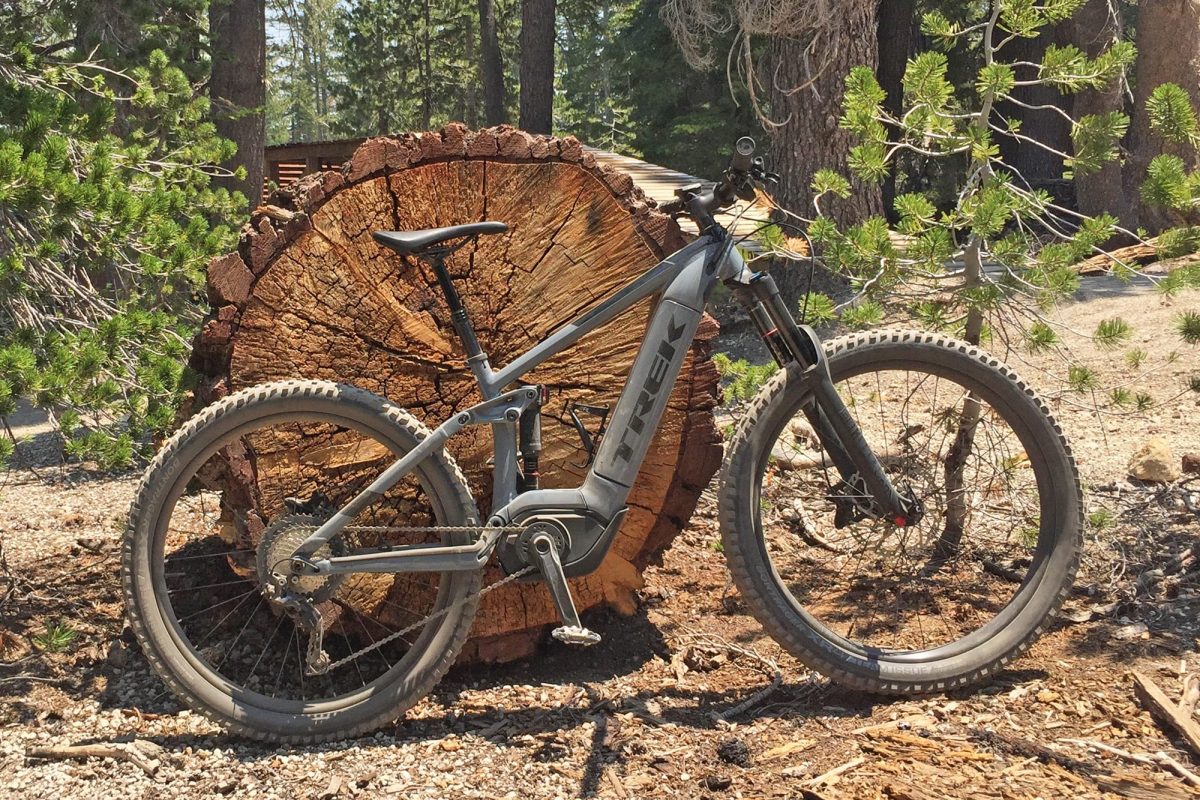

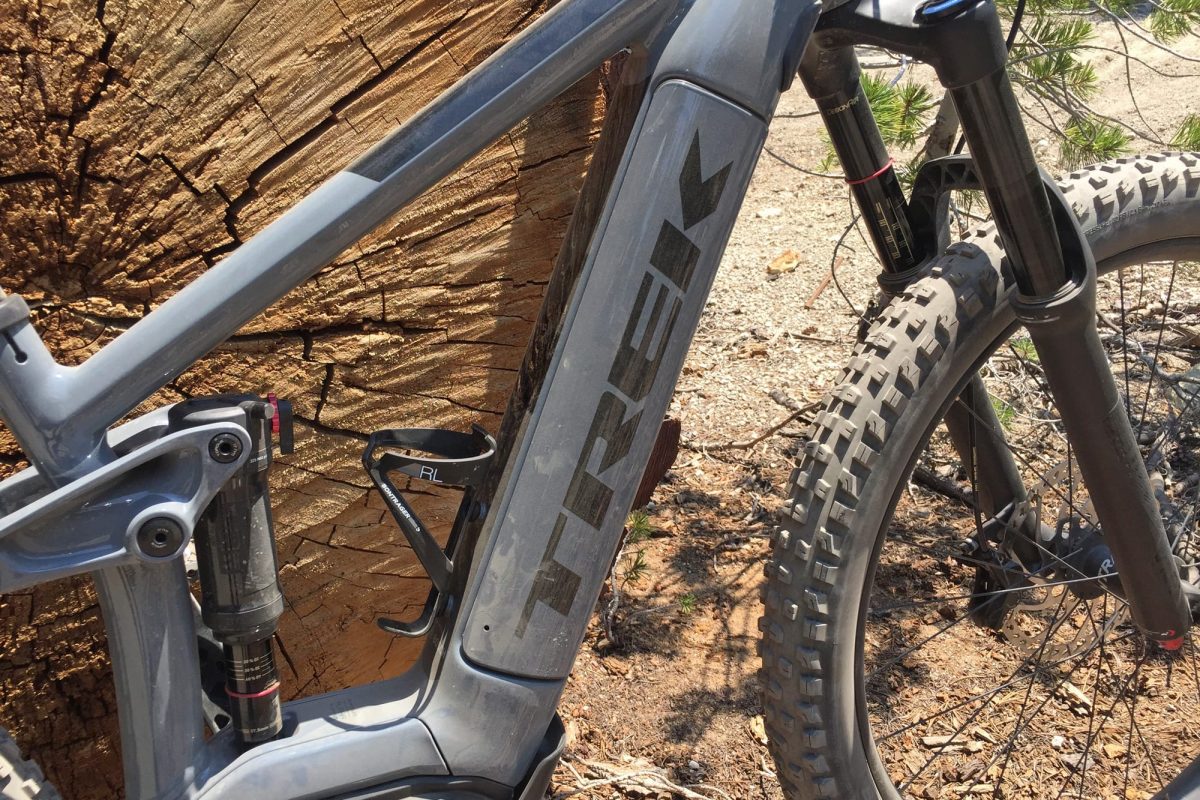




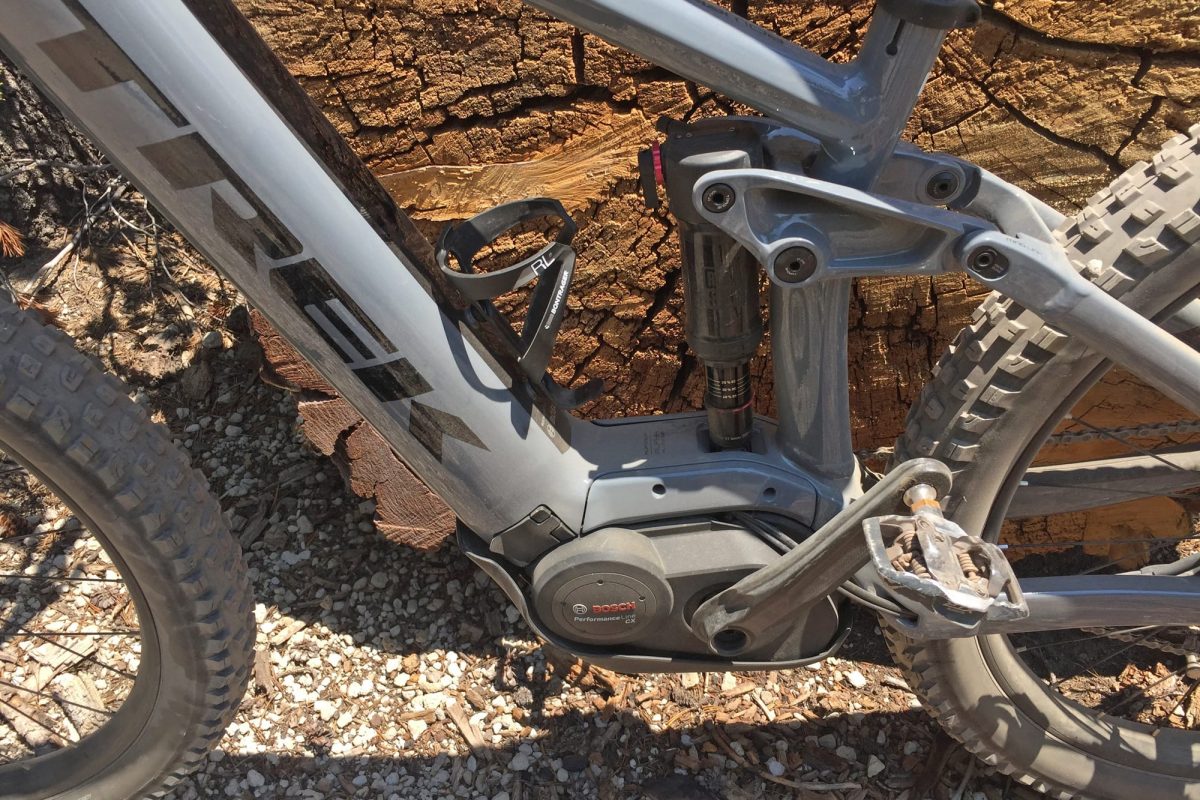








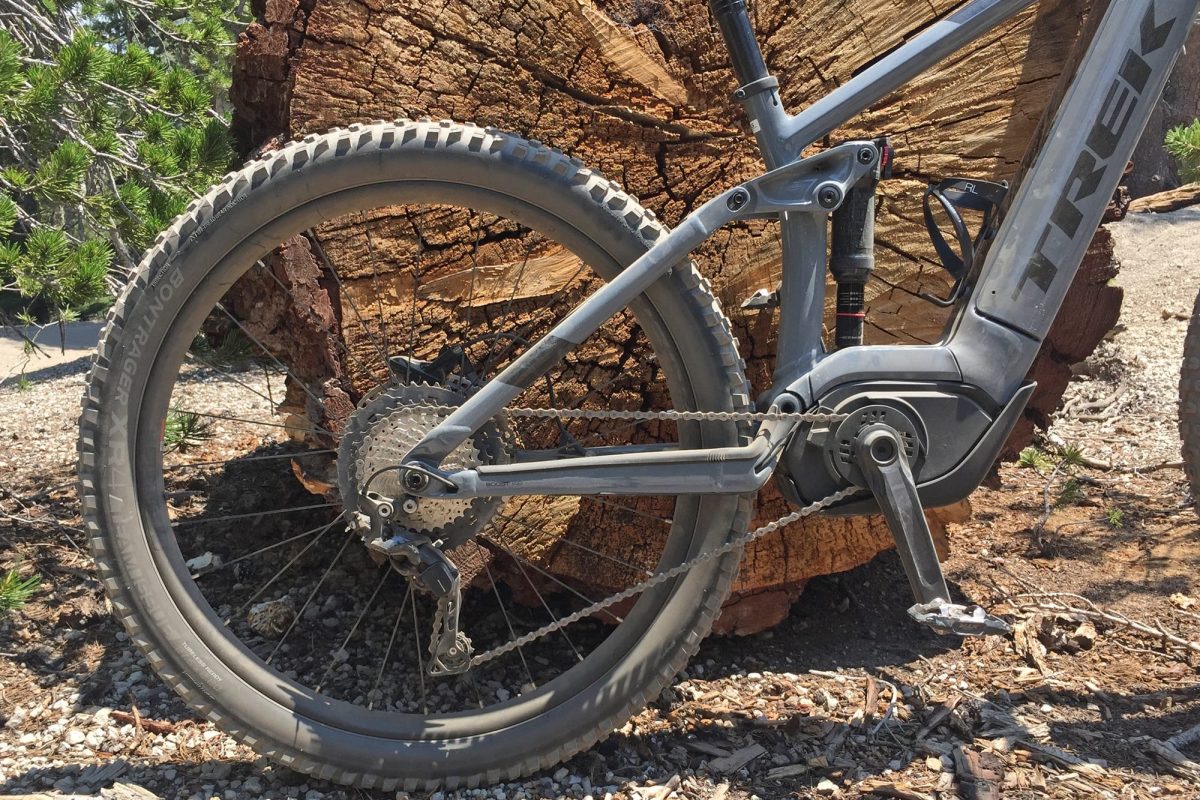

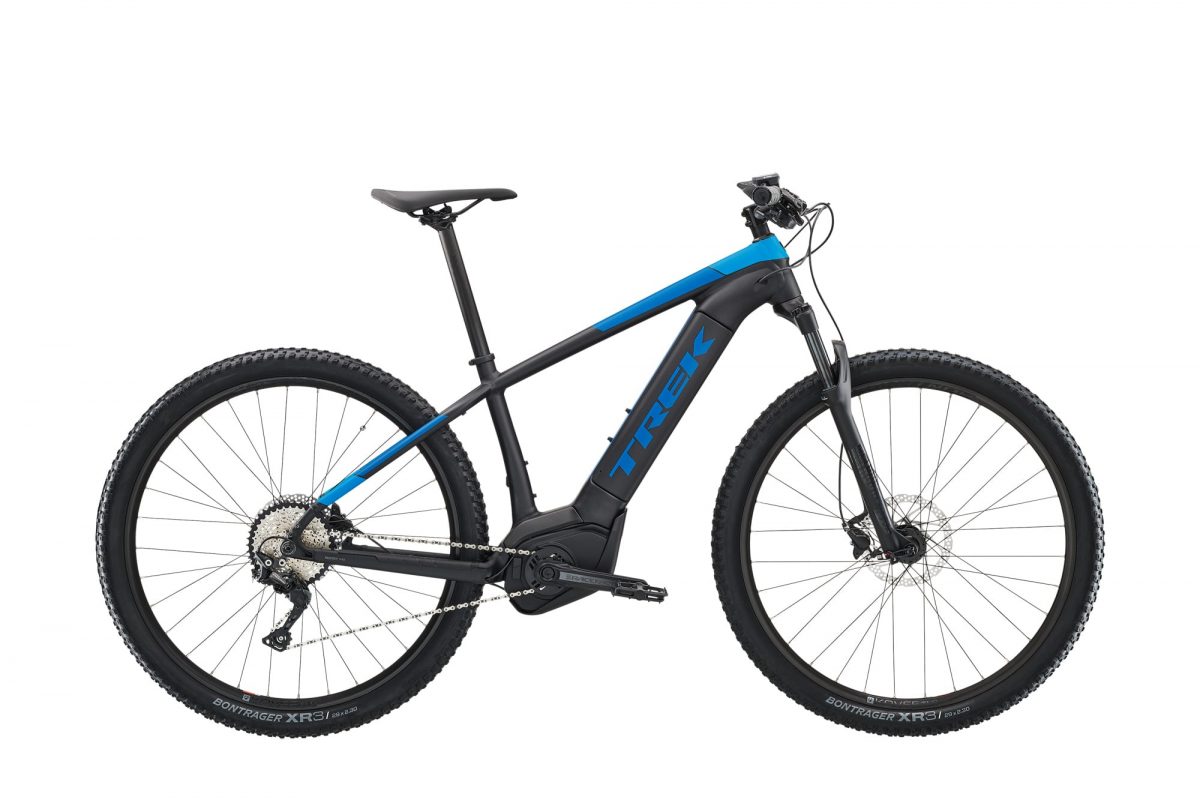

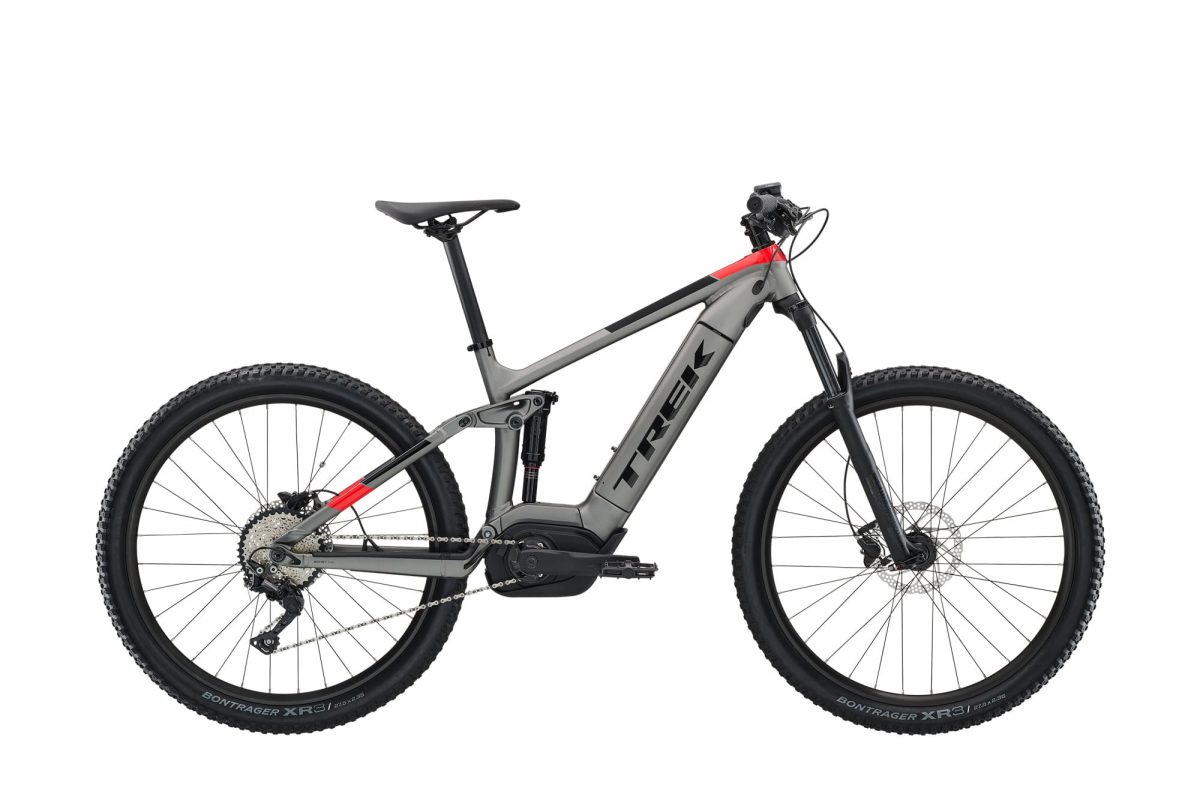


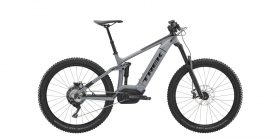

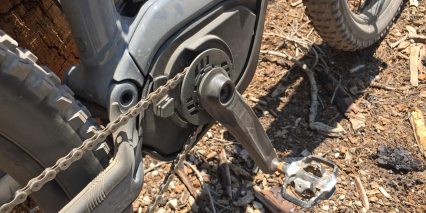
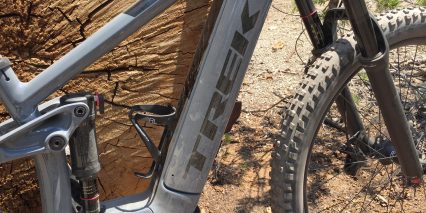
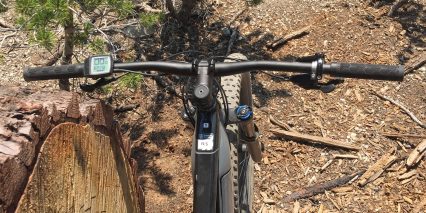

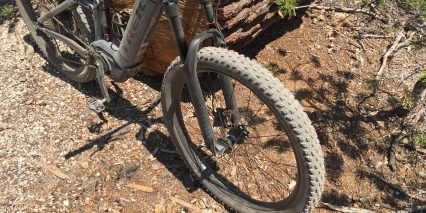

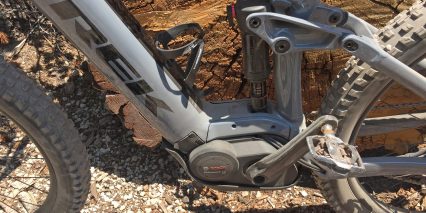
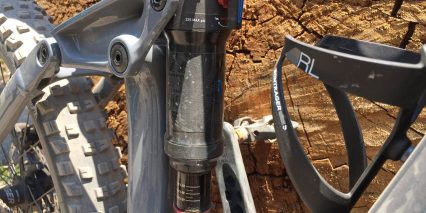
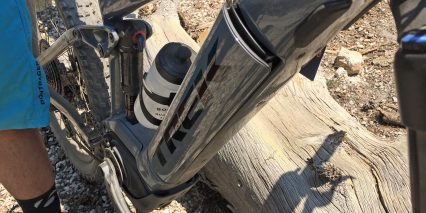
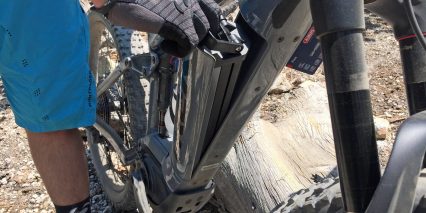
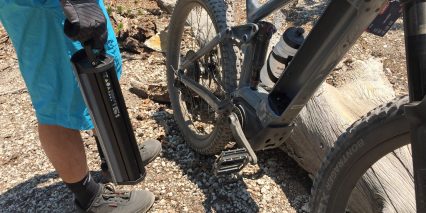
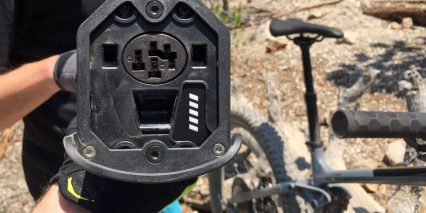
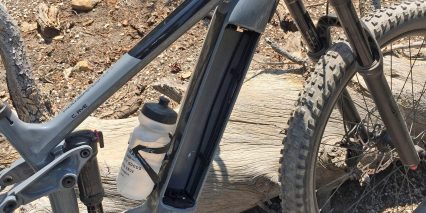

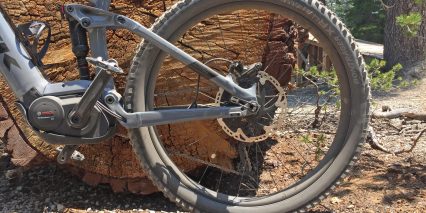
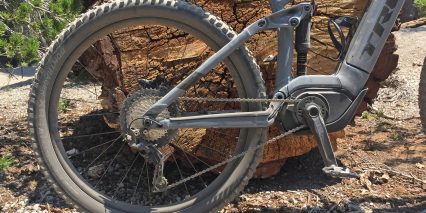
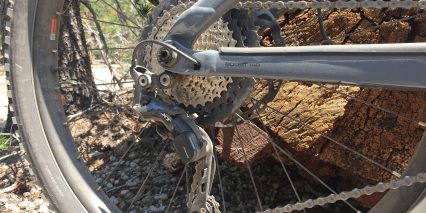
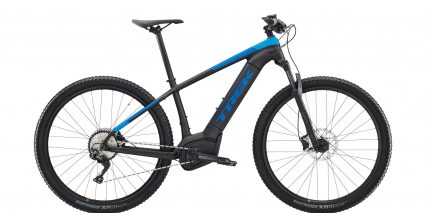

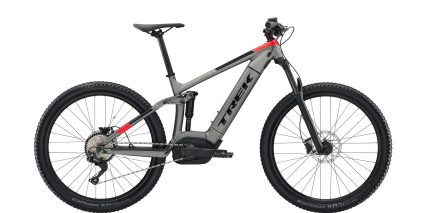
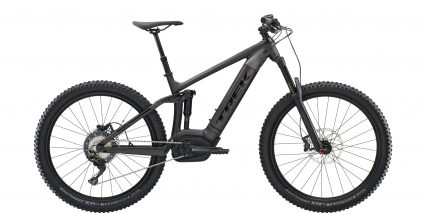
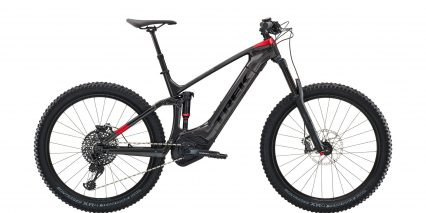

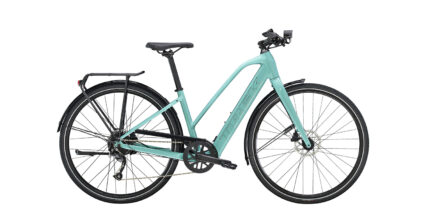
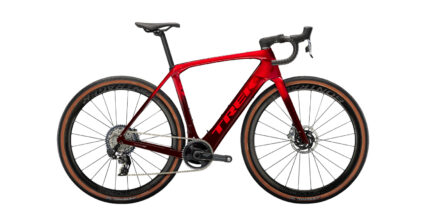
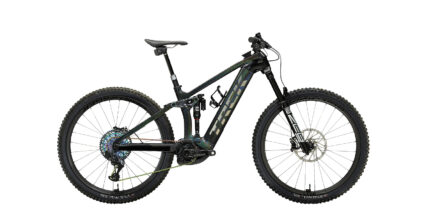
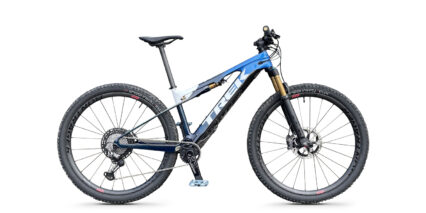
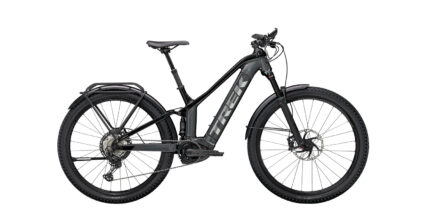
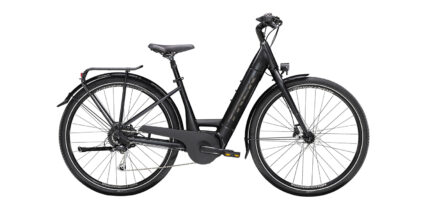


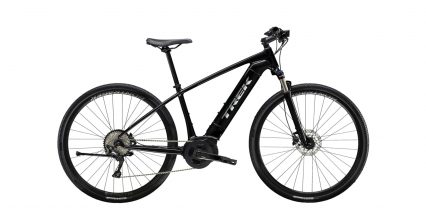

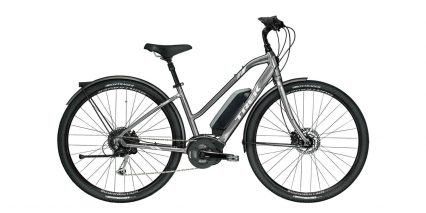
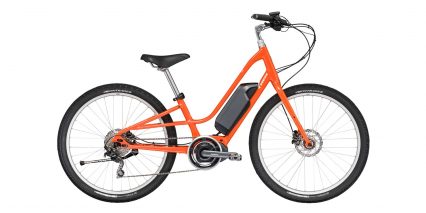
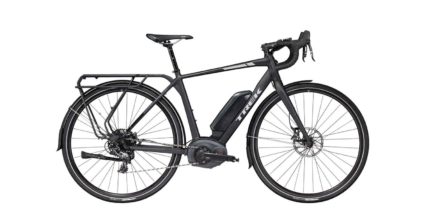
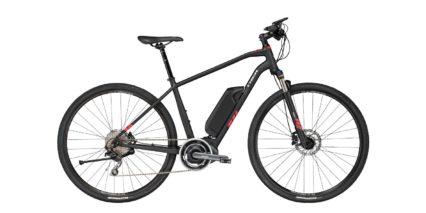
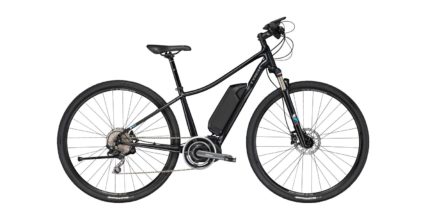
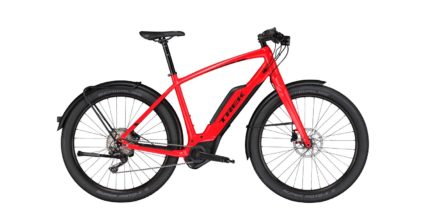

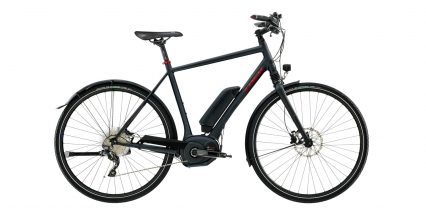
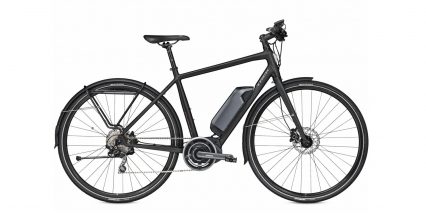
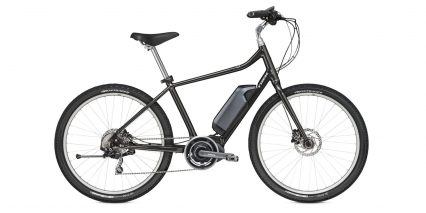

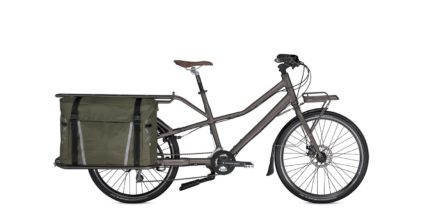
Dave
6 years agoGreat review, appreciate all the detailed information! A couple of questions…
Thanks!
ReplyCourt
6 years agoGreat question, Dave! I have done exactly what you suggest here because comfort is such a big deal for me and I only have had budget/space enough for one bike. I went with a full suspension Haibike, Easy Motion, and then Specialized over the past few years and just wore a backpack for supplies. The knobby tires produce more noise but otherwise work great in all conditions… not having fenders can mean you get wet and dirty, but there are some zip-tie mounting mud guards that could help with that as well. Regarding range… both the high speed motor and high torque motors use more energy, and a lot of this depends on where and how you ride, but the high-torque CX is my preference because it offers eMTB mode and can be ridden legally in more locations. You can always add some lights to the bike and wear a backpack to commute, but you cannot as easily take a Supercommuter off-road. I think you’d probably get similar range on both in urban environments :)
ReplyNeil
6 years agoHi Court, thanks for another fine review. Your mechanical camera shots keep getting better, so keep up with the shifting segments and suspension action, apparently taken using various frame or handlebar camera mounts… way cool. Additional closeups and camera time on suspension pivot points and other key mechanical features are always welcome. Please avoid the 1 hand MTB riding shots, use the helmet cam, I don’t want to lose you, man!
But I didn’t hear much about motor power. 250W just seems so small. Yes, I know there is a 15t in the front and a 46t in the back so even a 250W will climb dang near straight up, but still, how fast? I remember an old Hilltopper review you did and that little 250W motor chattered and stalled. Yes, I know that with the mid drive it is not going to chatter or stall on even a very steep hill, but aren’t you then limited to beginner speeds? Doesn’t that little 250W motor get boring after the first couple rides?
It seems that quality mid drives only come in 250W. Bafang makes 750W and 1000W but they are Chinese motors that don’t last and have some poorly engineered features, poor workmanship, and low grade materials (I’ve had my BBS02 apart 5 times, burnt winding, blown anti-vibration O ring, stripped plastic gear, broken steel ring gear teeth, blown controller FET).
Does a Japanese, European, or American manufacturer make a well engineered, reliable, mid drive in the 500W to 1000W range?
ReplyCourt
6 years agoThanks for the encouragement around frame shots, and your concern for my safety! Regarding motor power, think of it like 600 watts and up to 75 newton meters with an efficiency of 250 watts for flat sections. The Bosch Performance Line CX if very capable. It’s smarter and much more dynamic than other ebike motors (especially hub motors that tend to hype their peak output). In terms of mid-motors, I have found that the Bosch drive is one of the zippier and sportier feeling systems, I don’t think you’ll be bored at all. You are correct that Bafang has a series of more powerful motors, and that they tend to use less sophisticated sensors and possibly lower quality hardware. I haven’t spent as much time with those motors digging in the way it sounds like you have. As for premium mid-drive systems that reach into the 1,000 watt range… no, I think the Bosch CX, Brose S or S Mag, Shimano E8000, and Yamaha PW X are the best to consider and I’ve made a little comparison video with steep climbing that you can check out here.
Reply